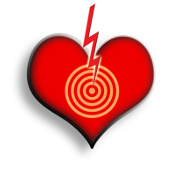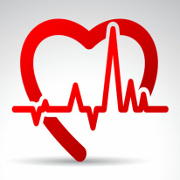 Photo: Getty Images
Photo: Getty Images
Left Bundle Branch Block – Right Bundle Branch Block - Hut 1 – Hut 2!
I swear, the very name of this condition -- Bundle Branch Block -- sounds more like a play you’d expect to hear on the line of scrimmage in a football game than a potentially serious health condition.
What is a bundle branch block anyway? At its simplest level, a bundle branch block is a heart condition related to a malfunction of the heart’s electrical system in the ventricles.
I have to admit that I’m one of those people who generally doesn’t like to be bothered by technical things. When I turn the key in the car, I expect the signal to send telling the starter to crank, the oil to circulate, the radiator to cool, the gas to flow and the engine to purr. How all this magically happens is a mystery and I really don’t want to know all the underlying details that make the car go. As long as it runs, I'm happy!
However, in the case of bundle branch blocks, understanding a little about how the heart’s electrical system works is helpful to understanding what bundle branch block is all about and how it impacts your heart health.
Imagine for a moment that your heart is part of this wonderful electrical circuit that keeps the heart beating, the blood pumping and the oxygen circulating. Just as an electrical current causes your lights to come on when you flip the wall switch, an electrical signal is given the moment your heart beats.
This electrical signal starts at the top of the heart and moves to the bottom of the heart and then begins the circuit all over again. The heart's electrical circuit is as follows:
1. Electrical signal begins in the sinus node or sinoatrial (SA) node located in the upper right chamber of the heart.
2. Signal travels to the right and left atria causing them to pump blood into the ventricles, or lower heart chambers.
3. Signal travels to the atrioventricular, or AV, node located between the atria and ventricles; blood continues to fill the ventricles.
4. Signal travels to the Bundle of His (atrioventricular bundle), which then divides into right and left bundle branches.
5. Signals from the right and left bundle branches travel to the ventricles and deliver the message to contract and pump the blood to the rest of the body.
6. Ventricles relax and the process begins again.
A bundle branch block occurs when this electrical signal is interrupted. The interruption can be partial or complete and may occur in either the left or right bundle branch. Because the signal is interrupted, the heart is not working at optimal efficiency.
Hearts with bundle branch blocks have to work harder than normal to deliver blood to the rest of the body. People with bundle branch block frequently have no symptoms, although some people may experience fainting, bradycardia (slower heart rate than normal), or presyncope (feeling as if you’re going to faint).
Bundle branch blocks are a very common condition. Because they are generally caused by an underlying heart condition, there is no treatment for bundle branch blocks. Instead, the underlying cause is treated. The only way to diagnose a bundle branch block is through the use of an electrocardiogram.
Bundle branch blocks can be caused by a variety of conditions:
Right Bundle Branch Block
While it may occur in healthy persons with no underlying cause, right bundle branch block may occur with any condition that affects the right side of the heart or lungs such as chronic lung diseases, blood clots in the lungs, congenital heart defects, heart attack, high blood pressure, scar tissue in the heart from prior surgery, infection of the heart muscle or cardiomyopathy.
Left Bundle Branch Block
Left Bundle Branch Block generally serves as a signal that there is an underlying heart condition such as hypertrophic cardiomyopathy, cardiomyopathy, coronary artery disease or heart disease high blood pressure, congestive heart failure or aortic valve disease.
Bundle branch block can have some serious complications. Persons with bundle branch block may experience a heart rate that is slower than normal or a heart arrhythmia or irregular heartbeat. In some cases, bundle branch block may result in cardiac arrest or sudden cardiac death.
Sources:
Bundle branch block. The Mayo Clinic. 13 Mar 2010. http://www.mayoclinic.com/health/bundle-branch-block/DS00693
Bundle Branch Block. Cedars-Sinai Heart Institute. 2011.
http://www.cedars-sinai.edu/Patients/Health-Conditions/Bundle-Branch-Block.aspx
What is an Arrhythmia? National Heart Lung and Blood Institute. 01 Jul 2011. http://www.nhlbi.nih.gov/health/health-topics/topics/arr/
Your Heart’s Electrical System. National Heart Lung and Blood Institute. 01 Jul 2009.
http://www.nhlbi.nih.gov/health/health-topics/topics/hhw/electrical.html
Reviewed September 28, 2011
by Michele Blacksberg RN
Edited by Malu Banuelos






Add a CommentComments
There are no comments yet. Be the first one and get the conversation started!